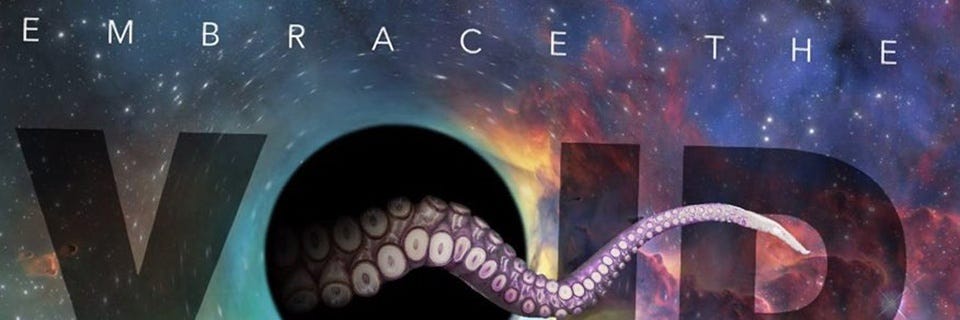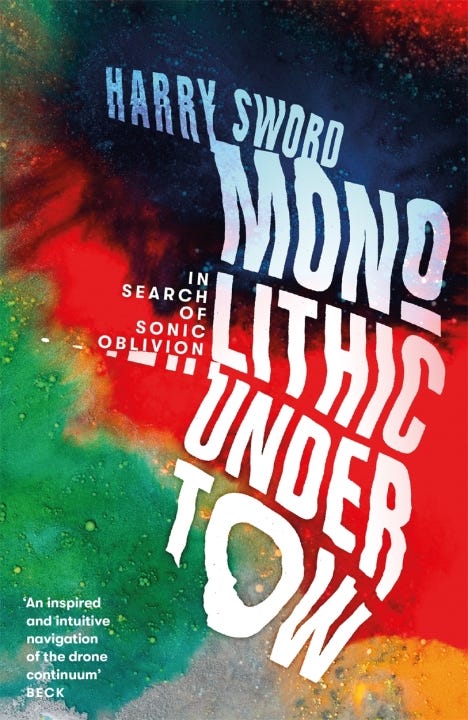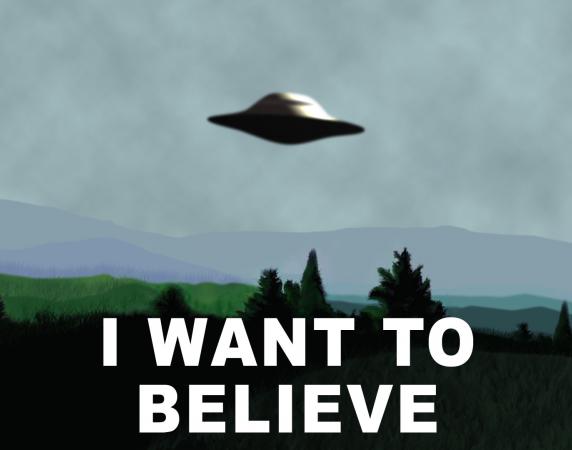
The last post hereabouts was a doozy. “AI EEEEEE!!” was my somewhat feverish take on AI, and I am still working through feedback from the piece, most insistently from my own heart and mind.
Perhaps the most pressing issue is the following paradox.
Like a lot of observers, I am pretty dang sure that the explosion of AI and especially Large Language Models in our midst is going to make things much weirder. Not only will these sprightly non-human agents fantastically and ominously “re-animate” our (supposedly) disenchanted modern world, but they will intensify the alien and recombinant logic already loose in the engines of cultural production. The predictive and emergent powers of these technologies will challenge and undermine many institutional, social, and even psychological realities at an axiomatic level, setting up anomalies that will, I suspect, sometimes lend a dreamlike, absurd, and sometimes nightmarish character to no-longer ordinary life. El sueño de la razon produce monstruos, the painter tells us. But so too might pattern recognition unleashed in algorithmic overdrive, loosed from human control.

But from another perspective, these technologies are anything but weird, at least in the more “classic” senses of the term that animate High Weirdness. In that book, weirdness is associated with a dark Romantic twist away from daytime Enlightenment values, or with the ontological warp field of an unknowable Beyond, or with a counter-cultural swerve from the norm, or with the looping enigmas of psychedelia.
But as many critics have pointed out, many of the AI systems already influencing society, such as the statistical models informing a lot of modern policing, are not being weird at all. They are rather doing the “same as it ever was” dance: a repetition of assumptions based on limited training data whose biases are naturalized through that very repetition. Far from swerving away from a norm, these systems make the future by conservatively iterating the past. Even the apparent creativity of LLMs relies on the novel shuffling of a gargantuan deck of cards that already exists (much of which belongs to other people, but that is another question). The extraordinarily rapid adaption of ChatGPT to a wide variety of tasks, from job applications to undergrad papers to movie scripts, may unsettle business as usual, but it threatens to drown us all in a blizzard of mediocre approximations of other mediocrities — like all those legions of drivers discovering the secret back alleys revealed by Waze. The algos aren’t just good at factoring primes; they may also excel at unearthing ever lower lowest common denominators.
None of that suggests the weird. But one of the fascinating things about AI is the way it forces us to think again about first principles and core definitions. So too with weird. One place to start is to clarify the difference between weirdness as the passive response to the loss of familiar categories, and weirdness as an active mode of engagement with reality. Some colleagues I know even speak of an “ethics of weirdness”, something I hope to work on more and that would presumably involve risk, improvisation, nonsense, even magic, not to mention a refusal to retreat before the bizarre, the disturbing, the nonhuman, the unthinkable. To turn and face the strange; to stay with the trouble.

For all sorts of reasons, I think its important to embrace this ethics against the pseudo-weird onslaught of the algos, just as I think its important to source music, restaurant, and movie recommendations from human beings. But this strategy of defense brings to mind the slogan Keep Austin Weird, which has since been repurposed for Portland, San Francisco, Seattle, and other formerly groovy towns. These calls are sad because they fail the second they are uttered. When you are forced to demand the preservation of the weird, the shark hath jumped.
This dialectic is muddy from the get-go, of course. It’s a version of the more familiar hipster trap: over time, the marginal labor of the bohemian experimentalist and taste-maker is swallowed up by the smug cartoon of the in-the-know consumer clone. But the near inevitability of this process also suggests that the first hipster was already part of the program whether they knew it or not, an early adopter of sorts, a pioneer of gentrification. Keep Austin Weird, after all, was the invention of the Austin Independent Business Alliance.
So maybe authenticity is the wrong way to go here. The weird is characterized by ambiguity and ambivalence, after all, a zone of meanings (and woozy meaninglessness) that is definitionally negated by making sharp definitions. Despite its fidelity to ancient night, weirdness offers more varied twists than the old Romantic subversion of Enlightenment values — in part because those values, like the WEIRD (Western, Educated, Industrialized, Rich, and Democratic) modernity they partly led to, and especially the technologies they helped spawn, are already pretty peculiar. Our whole world has been imagineered, though the flash of wonder and awe rarely lasts long before the devestating grind of capitalist realism depletes the charm.
That’s why I want to suggest that today’s weird is always coupled in unstable ways with what appears to oppose it: the banal. Here I am reminded of the polarity that characterized a lot of thinking about religion in the twentieth century: the distinction between the sacred and the profane. On the one hand, following the anthropological logic of the taboo, the distinction marks sacred space as a zone already set apart from the broader social field. But religion also defines and constitutes itself by recursively drawing that very distinction. It’s a version of the bootstrap. Similarly, while we might define weirdness against the banal, the distinction keeps repeating itself within the constested domain of novelty, as routinization and familiarity and commerce draw their grids across the formerly nebulous Zone.
After my post ran, my pal Antero Alli sent me a link to a short video he made thirty years ago about “The Word, Weird.” Alli is a provocative underground thinker and artist, known for his brilliant RAW-inspired book Angel Tech (1987), his innovative postmodern astrology, and an extraordinarily productive career making radically independent “paratheatrical” films. Here is the five-minute video, which I urge you to watch with the following question in mind: when does it resonate with AI weirdness, and when does it speak for an entirely different orientation?
Weird is wild, with a built-in autonomy factor, but it can also be faked or aped. Is AI actually wild, or is the enchanted emergence just another version of the ideology that naturalizes technology to disguse its social origins and what Heidegger recognized as its pitiless enframing of resources? Alli also recognizes that weirdness is “a relative condition,” not so much a characteristic of the thing itself but “the energy you feel, sense, or imagine coming at you from anything or anybody currently beyond your control and comprehension.” Weirdness is partly in the eye of the beholder, then, which means that knowledge and routinization change the vibe. Cthulhu goes plushy.
Alli also reminds us, however, that weirdness is a feature of objective reality, or at least the picture that physics paints of said reality. In other words, the weird will not be vaporized anytime soon, especially as we dive ever more deeply into the quantum future. But Alli’s most intriguing suggestion is that weirdness may be identified with potential itself: the not-yet, the what-if, the excluded middle, the “nobody” that we really are. The real question, then, is whether AI will further expand the field of potential for anything other than capital. Will it help maintain the openness that characterizes the human (and some of its posthuman possibilities)? Or will it iteratively stitch up that weirdly sacred nebulosity, collapsing the open field into a vanishing point of no return?
Also…
I approached my PhD program like an Outward Bound course, and when I wrote the dissertation that became High Weirdness, I set myself some stretch goals. One was to finish it by the fifth year of the program (which is also when the funding ran out). Another aspiration was to produce a proper dissertation, with rich footnotes, fresh historical research, rigorous argumentation, and academically valuable concepts. But my final goal was the most subtle: I wanted to weird out in a “serious but not literal” way that pushed things as far as I could without invoking anything that a reasonably open-minded skeptic would feel compelled to reject out of hand. No supernatural sources; no postmodernist aporias; no reactionary Romanticism; no totalizing critiques of science. This wasn’t just a strategy; as an intellectual, this is actually how I (mostly) approach things, even as I like to dodge the limitations imposed by own views through all manner of oblique strategies.

One of the many things I enjoyed about my recent conversation with Aaron Rabinowitz on his Embrace the Void podcast was concrete confirmation that my final aspiration had met its target. Rabinowitz is a sharp skeptic. He teaches philosophy at Rutgers, where he thinks about ethics from a largely analytic perspective, and though his show (and the companion Sci Fi podcast Philosophers in Space) ranges widely through many marvels, his bullshit detector is definitely set to stun. But he really grokked High Weirdness, and the conversation went to some excellent places. Definitely worth a listen.
Also, this just in: my gabbing is featured throughout the new four-part docuseries Amityville: An Origin Story, which just premiered on MGM+. My talking head, which I am afraid does not twirl or speak in demonic growls, provides occultural backstory and thoughts about the 1970s. It’s a fascinating story, and though I haven’t watched the show yet, I can promise you that the unoccupied Brooklyn house with the dilapidated ‘70s decor that served as a backdrop was genuinely creepy.
Watching
In the marvelous “Nalujuk Night” (2021), a National Film Board of Canada documentary short, director and Labrador Inuk artist Jennie Williams captures a local Inuit Christmas tradition in unsettling magical realist style. Every January 6, furred and freaky creatures known as Nalujuk (“heathens”) stumble into town, where they give some kids gifts and chase down others and hit them with sticks. There is fun to be had, for sure, but these skull Santas are creepy, and the socially sanctioned punishments they mete out less tame than you might imagine. Recalling the dialectic of the weird and the banal discussed above, the film successfully justaposes feral myths and the quotidian life of indigenous communities in an off-kilter that suggests a deeper weird than “tradition” alone.
The other short marvel I have for you is Don Hertzfeldt’s animated mindfuck “World of Tomorrow” (2022), which was tossed my way by David Arnson of the Insect Surfers, the world’s longest running psychedelic surf band. (Thanks Dave, and keep ‘em coming!) With sprightly minimalist lines and a brilliant use of color, Hertzfeld serves up a spare science fiction in which the older cloned descendent of a little girl gives her a grim but fantastic tour of the posthuman future. Masterfully balancing different emotional tones — cuteness, satire, nostalgia, dread — Hertzfeld crafts a bent allegory whose absurdism cuts paradoxically close to the bone of who we are now as we hurtle into the feedback abyss ahead. Note to (future) self: maybe think twice about that life-extending upload…
Reading
I love good music writing and I wish I had more time to read it and scribble it. Back in the day, much of my own music criticism was concerned with the occult and religious dimensions of popular music, a once recherché topic that I am happy to report is getting lots of fine coverage of late. First up is the British journalist and music critic Matthew Ingram’s self-published book The “S” Word (2023, Hollow Earth). The book gathers together a handful of essays on spirituality in music, including forays into cosmic psychedelia, dub, New Age, Prince, even the psychic peregrinations of the Fall’s Mark E. Smith — a highlight that takes on the rarely discussed role of class in occulture.
Ingram is a curious writer, at once hasty and thorough, and he oscillates between devotion and sass, slap-dash takes and remarkable insights. As in his earlier book Retreat, which critically engaged the countercultural origins of today’s wellness culture, Ingram recognizes that spiritual states, psychosis, and drugs need to be treated as part of one weird and sometimes inspiring continuum. Criticism, in this case, is useful not just for parsing aesthetic products, but for assessing sometimes dodgy works of the spirit. And while Ingram’s “spiritual criticism” is prone to glib takes, as well as small errors of fact, he gets the big picture even as he unearths many a marvelous nugget. He can compare Neil Young to the bodhisattva Chenresig, or Wire’s Pink Flag to Zen, and totally pull it off. The whole project is infused with geek love, a collector enthusiasm for sonic arcana that not only packs the pages with obscure album covers and other ephemera, but quintupled my discogs want list.

Next up is another S Word: Sword, Harry Sword to be exact, the also British author of the marvelous and compendious Monolithic Undertow: In Search Of Sonic Oblivion (White Rabbit, 2021). Here Sword offers a rich and colorful history of modern drone music — generously understood — as it wends its way between the avant-garde, the underground, and the frankly mystical. Monolithic Undertow is a braided work of music journalism and critical riffage, one that covers many of the usual subjects, and lots of unusual ones as well (the Master Musicians of Jajouka, Mr. and Mrs. Coltrane, Ravi Shankar, La Monte Young, the Velvet Underground, Krautrock, Eno, Sabbath, Sonic Youth, Swans, Bongripper, Spacemen 3, Sleep, the Orb, Coil, etc.). He probably tells you more about his subjects than you need, but just when you are starting to grind down he hits you with some sticky cannabinoid prose or intimations of implacable doom, so you feel well taken care of.
Sword recognizes that his topic is so deep that it sinks beneath or beyond music, and he wisely spends time with cosmic hums, wombs, anthropological trances, and psychedelic phenomenology. At times I found the drone definition a tad too copious — Earth, yes, but Black Flag? Morton Subotnick? the Bug? — but I loved Sword’s blend of swagger and care, his unbelieving comfort with sacred longings and his rockist refusal of rockist orthodoxies. Plus he ends the tome with an appreciation of Burning Shore favorite Sarah Devachi, whose electro-music music, he writes, is “informed by a willingness to interrogate the inner grain of sound, to get right inside a chord and stay put for as long as necessary.” I’m still there.
I hope you enjoyed this flicker of Burning Shore. These pieces and updates come when they do, and I avoid the crushing anxiety of the hamster wheel by not offering paid subscriptions. But you can always drop a monetized appreciation in my Tip Jar.




